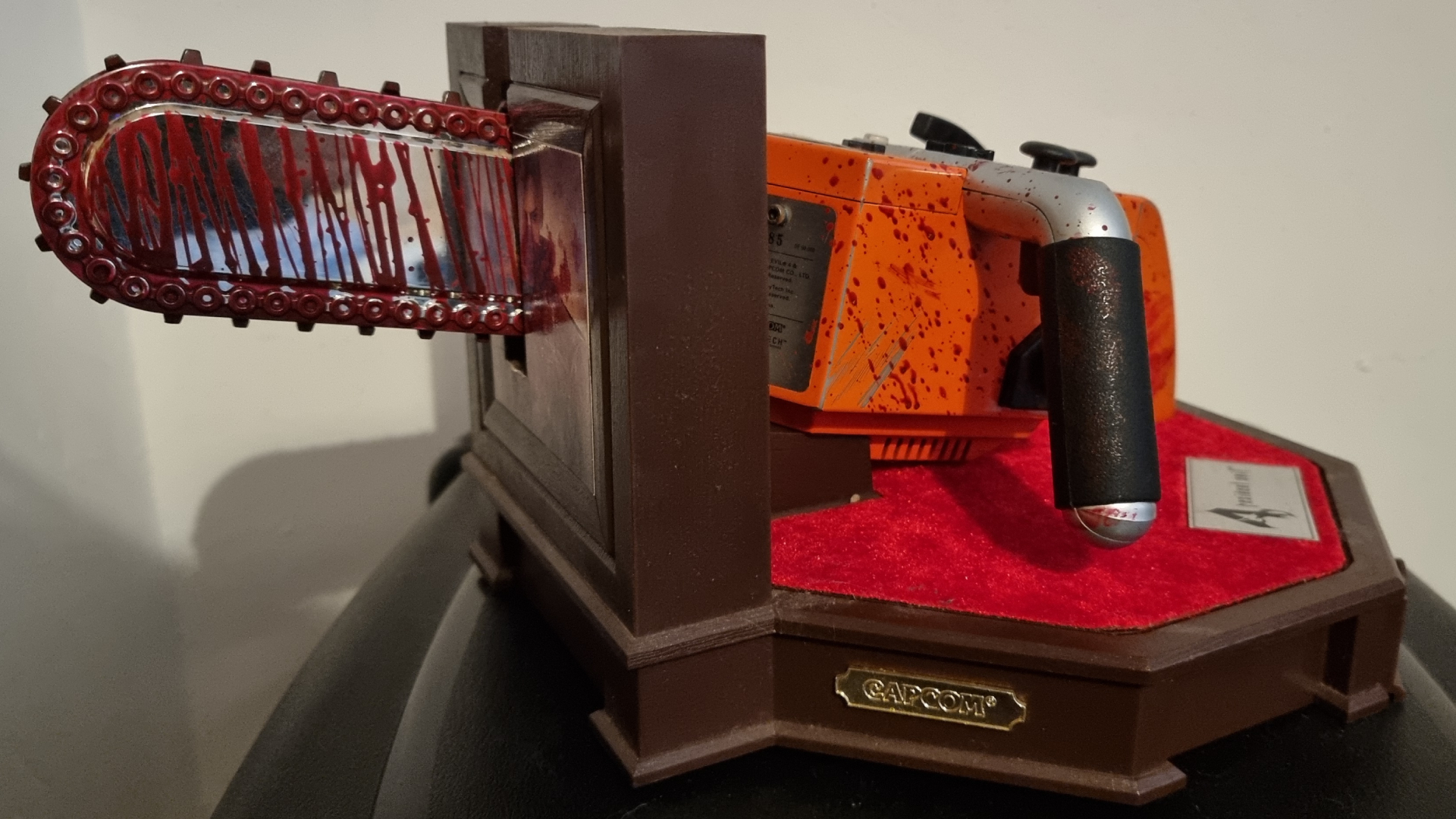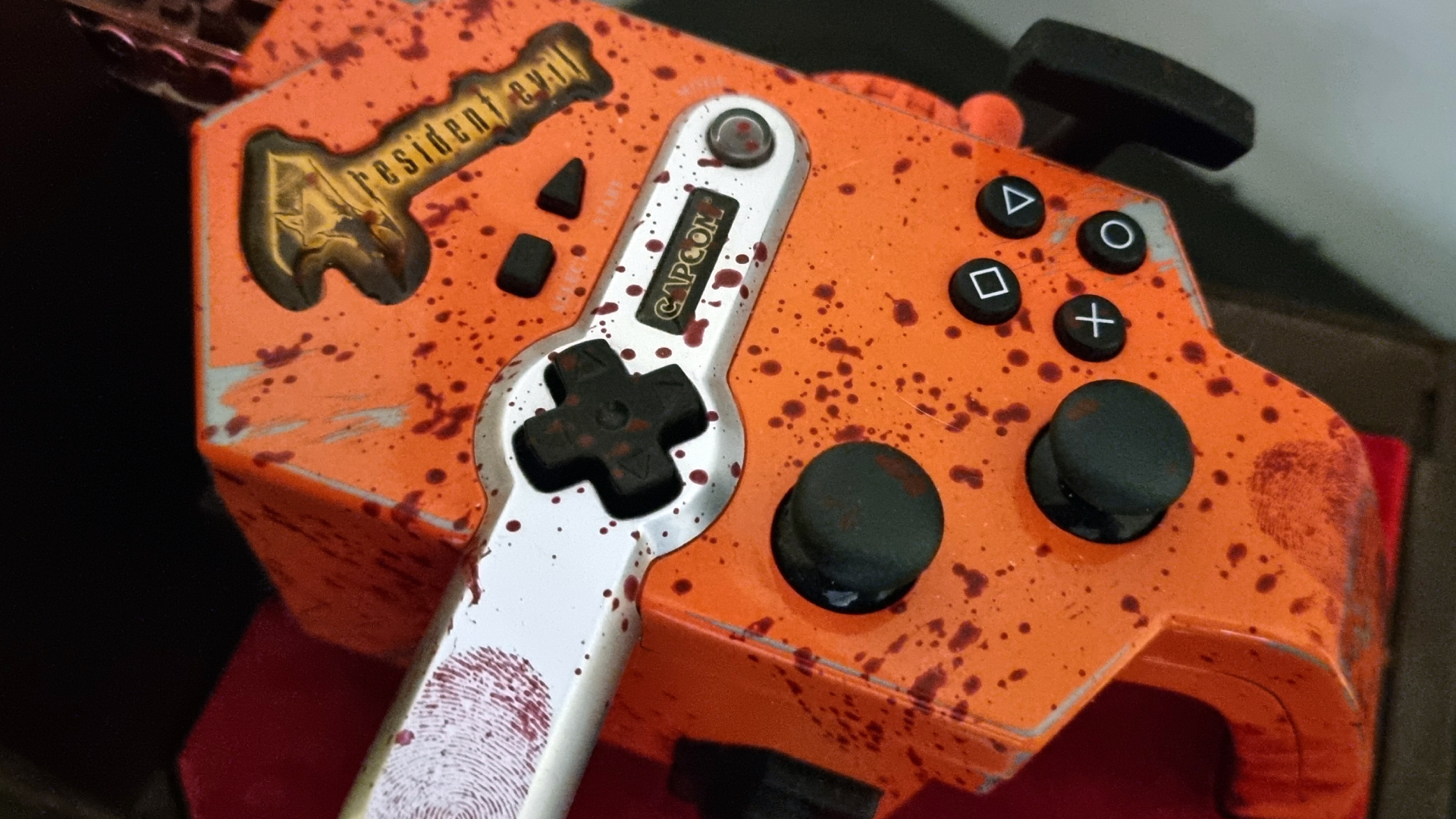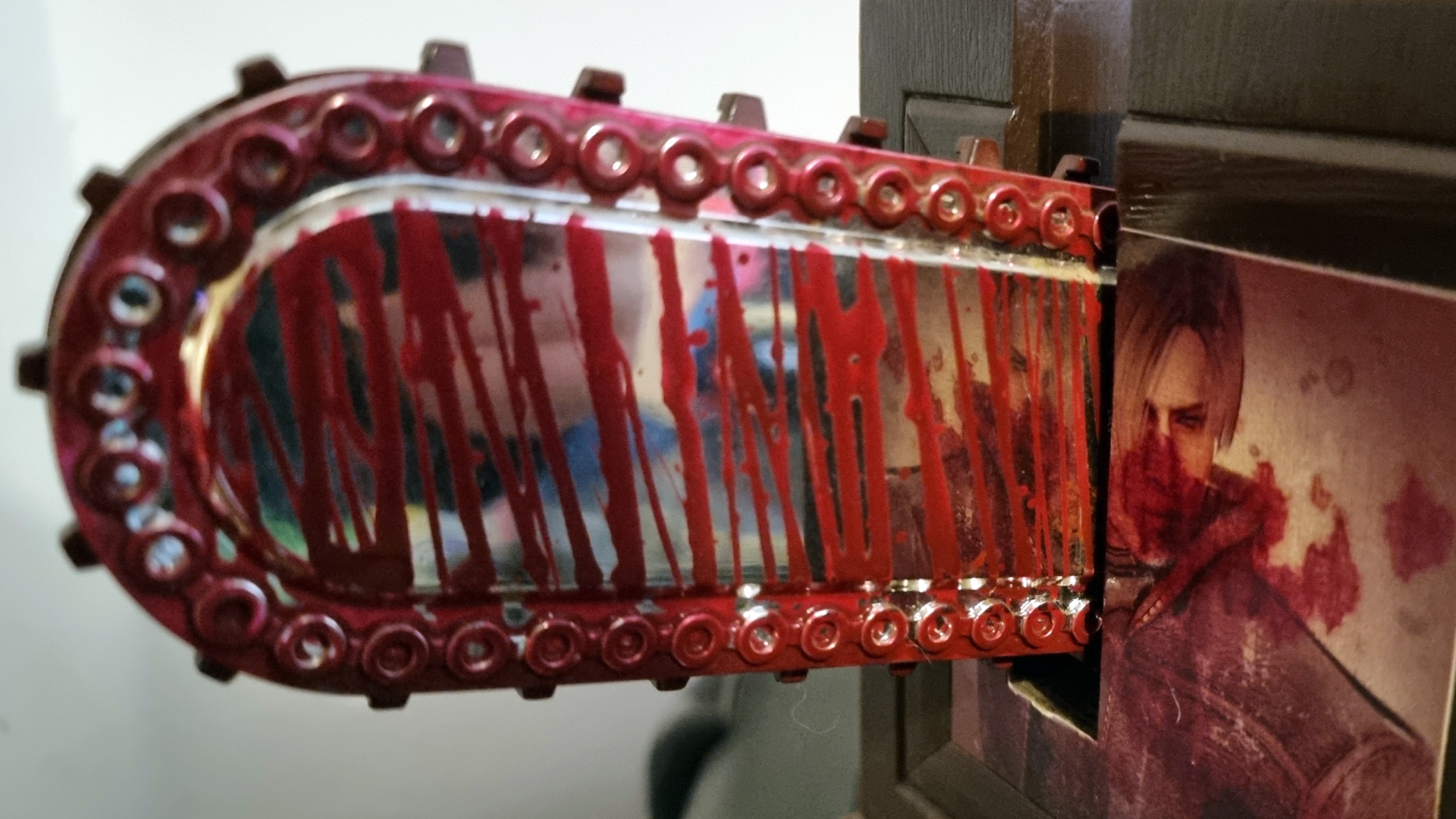
One of my favorite parts of Resident Evil 4’s storied history is a bizarre piece of hardware that launched alongside it. Lovingly dubbed the ‘chainsaw controller’ by series fans, it is perhaps the worst peripheral I’ve ever used when it comes to actually playing games with it.
Manufactured by NubyTech in 2005, a total of 50,000 chainsaw controllers were made; a yellow variant for the Nintendo Gamecube, and an orange one for the PlayStation 2. Each has a serial number lending some uniqueness to each unit, and I’m lucky enough to own one myself. Not because I had the hindsight to buy one as a 12-year-old back in 2005, but rather a friend was looking to get rid of his during a house move.
These days, the chainsaw controller typically goes for a king’s ransom on auction sites like eBay, with prices ranging from $400 to $1,500 (or about £350 to £1,000 in the UK) depending on the unit’s condition. And having played a bunch of PS2 games with the thing recently, I can quite confidently say it is not worth those asking prices. As a functioning piece of hardware, at least.
Rev it up

To play games with the Resident Evil 4 chainsaw controller is, frankly, an abysmal experience. But first, you need to understand just how unintuitive its button layout is. The face buttons are all slightly off-kilter and about the size of the ones you’ll find on a Nintendo Switch Joy-Con controller. The analog sticks are similarly minuscule, and the Start/Select buttons are placed so far apart from everything else that I often forgot they were even there.
Worse still are its shoulder and trigger buttons. L1 and R1 are placed under each grip, while L2 and R2 sit perpendicularly at the base of the controller. This made aiming and shooting in titles like Timesplitters: Future Perfect a near-impossibility; the only way to reliably fire a weapon while keeping my thumb on the right analog stick was to tap R2 with my fingernail. On my middle finger.
Not much luck was had when playing other games, either. Take Silent Hill 3, where you’re frequently holding L2 to keep the camera positioned behind Heather. With the chainsaw controller, this meant keeping my middle finger on the trigger, while juggling aiming and firing with the others. Truly a nightmare in an already violently scary game.
Did I fare any better with Tekken 5? Actually, yes, sort of. When playing Tekken on controller, I opt for the ‘claw grip;’ placing the pad on my lap so my index and middle fingers are free to hit the face buttons. This worked surprisingly well on the chainsaw controller, with one slight issue. The port required to connect the controller to the PS2 is also on its base, so I had to carefully rest it on my knee so as to not accidentally disconnect it.
Get daily insight, inspiration and deals in your inbox
Sign up for breaking news, reviews, opinion, top tech deals, and more.
The controller’s crowning feature, though? The pullstart that acts as an alternate Start button. Now, this is only present on the PS2 version of the controller. But when you pull it, it’s supposed to play a chainsaw-revving sound effect. I say ‘supposed to,’ because that functionality on mine sadly doesn’t work anymore. I can’t be too upset - especially as it’s close to two decades old and may have experienced some form of damage in a previous life - but it is cool to see NubyTech went the extra mile in providing an immersive function like this for the PS2 version.
Bloody lovely

So the chainsaw controller hugely misses the mark when it comes to being functional and playable. But in terms of aesthetics, it’s absolutely one of my favorite bits of hardware of all time. Its build quality is genuinely superb, and is surprisingly lightweight given its size and shape.
A special shoutout has to go to NubyTech for its efforts to personalize each of the 50,000 chainsaw controllers, too. Each has a unique blood splatter pattern on the blade, and there’s a lovely metal plaque on the side of the controller where you’ll find its unique serial number. The left grip is textured with rubber, and there’s two very handy bloody thumbprints indicating where your own thumbs should rest during use. It may not play the part too well, but boy it certainly does look it.
It’s quite clear that NubyTech designed the chainsaw controller to be an ornament first. It ships in a plastic box that emulates the look of wood and glass. The base is covered with a red felt carpet, adding some prestigiousness to the overall display cabinet. The blade itself pokes out of the box, too, like it’s practically begging you to let it out. But for your own sanity, you must tell it no. Lastly, if you do decide to open up the box, you’ll find a weathered instruction manual that has a lovely old book-like texture to it.
I can’t recommend you go out and purchase the Resident Evil 4 chainsaw controller to actually use with games. It’s simply far too cumbersome to be used for anything other than gimmick playthroughs. And those eye-watering second-hand price tags, at best, make it about as affordable as a PlayStation 5.
But as a collector’s item for display, it’s genuinely one of my favorites ever made. It always turns heads when people come around for a visit, and overall, I feel it’s one of the coolest pieces of history for one of the best horror games ever made.
I may not be able to recommend the Resident Evil 4 chainsaw controller, but I can point you in the direction of the best indie horror games that are absolutely worth playing. Just not with the chainsaw.

Rhys is TRG's Hardware Editor, and has been part of the TechRadar team for more than two years. Particularly passionate about high-quality third-party controllers and headsets, as well as the latest and greatest in fight sticks and VR, Rhys strives to provide easy-to-read, informative coverage on gaming hardware of all kinds. As for the games themselves, Rhys is especially keen on fighting and racing games, as well as soulslikes and RPGs.